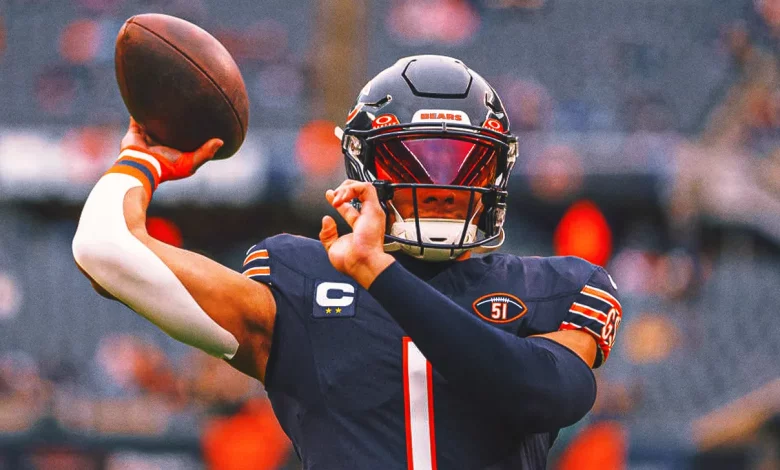The Bears can achieve a worst-to-first turnaround through strong coaching, key player improvements, strategic draft picks, improved defense, and effective team chemistry, transforming their prospects significantly.

In the NFL, the journey from the bottom of the standings to the top is a daunting yet attainable feat. The Chicago Bears, a franchise with a storied history and passionate fanbase, have experienced periods of struggle but also moments of excellence. Achieving a worst-to-first turnaround requires a holistic approach—one that integrates exceptional coaching, player development, astute drafting, defensive mastery, and cohesive team chemistry.
This comprehensive analysis explores how the Bears can leverage these elements to transform their fortunes dramatically, outlining the challenges, opportunities, and strategic steps necessary for such a remarkable rise.
Part 1: Understanding the Worst-to-First Challenge
1.1. The Nature of Turnarounds in the NFL
A worst-to-first leap in the NFL involves overcoming significant obstacles—poor roster talent, coaching deficiencies, organizational instability, and sometimes bad luck. Historically, successful turnarounds are rare but achievable through disciplined, strategic efforts.
Examples include the 2012 Washington Redskins, who improved from 5-11 to 10-6, or the 2017 Jacksonville Jaguars, who went from 3-13 to AFC Championship contenders within a year. These teams shared common themes: innovative coaching, key player acquisitions, disciplined development, and organizational focus.
1.2. The Unique Challenges for the Bears
The Bears face specific hurdles:
Historical inconsistency: Fluctuating performance over recent years.
Roster gaps: Need for talent infusion across positions.
Draft success: Past drafts have been mixed, requiring strategic improvements.
Offensive struggles: Historically, the Bears’ offense has lagged behind the defense.
Cap management: Balancing contracts and future flexibility.
Achieving a top-tier record demands addressing these challenges systematically.
Part 2: The Foundation – Strong Coaching
2.1. The Role of Coaching in Turnarounds
Great coaching is often the catalyst for transformation. Coaches set the tone, instill discipline, develop schemes suited to personnel, and foster a winning mentality. A proven head coach with a track record of turning teams around can be pivotal.
2.2. Current State and Opportunities
The Bears’ coaching staff must prioritize:
Innovative schemes: Emphasize modern, flexible defensive and offensive schemes.
Player development: Focus on nurturing young talent and maximizing existing players’ potential.
Discipline: Reduce penalties and mental errors that cost games.
Leadership: Build a culture of accountability, resilience, and teamwork.
2.3. Strategic Coaching Moves
Hire or promote experienced coordinators: Defensive and offensive coordinators with a proven track record.
Emphasize analytics and technology: Use data-driven insights for game plans and player performance.
Foster a competitive environment: Encourage internal competition to raise standards.
2.4. Impact of Coaching on Outcomes
Effective coaching can turn underperforming players into key contributors, create cohesive schemes, and adapt quickly to opponents’ strategies—crucial factors in climbing the standings rapidly.
Part 3: Key Player Improvements and Development
3.1. Identifying Core Players and Gaps
The Bears need to evaluate their roster critically:
Quarterback position: A franchise QB can be the cornerstone of success.
Defense: Pass rushers, linebackers, and secondary players must elevate their play.
Offensive line: Protecting the QB and establishing the run.
3.2. Developing Existing Talent
Training and scheme fit: Tailor training programs to enhance players’ strengths.
Mentorship: Use veteran leadership to guide younger players.
Performance analytics: Track progress and adjust training accordingly.
3.3. Acquiring Impact Players
Free Agency: Target players who can immediately contribute.
Trade market: Acquire established stars or versatile role players.
Draft strategy: Focus on high-impact rookies, especially at positions of need.
3.4. Cultivating a Winning Mentality
Player mindset is crucial. Emphasize:
Work ethic: Instill a culture of accountability.
Resilience: Build mental toughness to overcome setbacks.
Team cohesion: Foster unity through team-building activities.
Part 4: Strategic Drafting and Talent Acquisition
4.1. Draft Philosophy for Rapid Improvement
Prioritize high-impact positions: Pass rushers, offensive linemen, and a franchise quarterback.
Focus on character and work ethic: Avoid high-risk, low-reward picks.
Use analytics: Employ advanced metrics to evaluate prospects.
4.2. Drafting for the Future and Present
Balance between immediate contributors and long-term project players. For instance:
High-value picks: Defensive ends, linebackers, or offensive linemen who can start immediately.
Developmental prospects: Raw athletes with high upside and good character.
4.3. Uplifting the Roster with Free Agency
Target free agents who fill gaps and bring leadership. Consider players with proven playoff experience and leadership qualities to instill confidence.
Part 5: Defensive Mastery as a Catalyst
5.1. Building a Dominant Defense
The Bears’ defense has historically been a strength; restoring that identity is vital for turnaround. Focus on:
Pass rush: Invest in elite edge rushers and interior penetrators.
Secondary: Strengthen the secondary to minimize big plays.
Linebackers: Versatile players who can cover and rush.
5.2. Scheme Optimization
Implement schemes that maximize personnel strengths:
Aggressive pass rush schemes: Multiple blitz packages.
Flexible coverage schemes: Mix zone and man to confuse opponents.
Situational adjustments: Tailor strategies per game scenario.
5.3. Player Development and Rotation
Maximize pass rush by rotating players to keep them fresh and exploiting matchups effectively. Develop younger players into reliable starters.
Part 6: Fostering Effective Team Chemistry
6.1. Building a Cohesive Culture
A winning team depends on chemistry:
Shared goals: Clear communication of team objectives.
Leadership: Cultivate leaders within the roster who set examples.
Accountability: Encourage honest feedback and continuous improvement.
6.2. Team-Building Strategies
Offseason activities: Organized team workouts and retreats.
Communication: Regular meetings to align expectations.
Conflict resolution: Address issues swiftly to maintain harmony.
6.3. Handling Adversity
Resilience in the face of setbacks is essential. Cultivate mental toughness through sports psychology, routine, and leadership.
Part 7: Implementation Roadmap for the Bears
7.1. Short-Term Goals (Next 6-12 Months)
Hire a proven head coach or promote internally with a strategic plan.
Assess roster and identify key gaps.
Prioritize free-agent signings and draft selections targeting immediate impact.
Implement a rigorous player development program.
Create a culture of accountability and resilience.
7.2. Medium-Term Goals (1-3 Years)
Establish a stable, talented core roster.
Refine schemes based on personnel strengths.
Achieve incremental wins, building confidence.
Strengthen team chemistry through continuous leadership and unity.
7.3. Long-Term Vision (3+ Years)
Sustain success through smart drafting and player retention.
Develop homegrown talent into stars.
Build a consistent, winning culture recognized league-wide.
Conclusion
Achieving a worst-to-first turnaround for the Chicago Bears is an ambitious but achievable goal. It requires a strategic, multi-faceted approach—one that emphasizes strong coaching to unlock player potential, targeted player improvements and acquisitions, smart drafting to build a sustainable core, defensive excellence to dominate games, and a cohesive team culture that fosters resilience and unity.
By systematically addressing each of these components, the Bears can transform their fortunes, climb the standings rapidly, and establish themselves as perennial contenders. The journey demands patience, discipline, and vision, but with the right organizational focus, the Bears can turn their current struggles into future success stories—emerging from the league’s basement to the pinnacle of NFL dominance.









